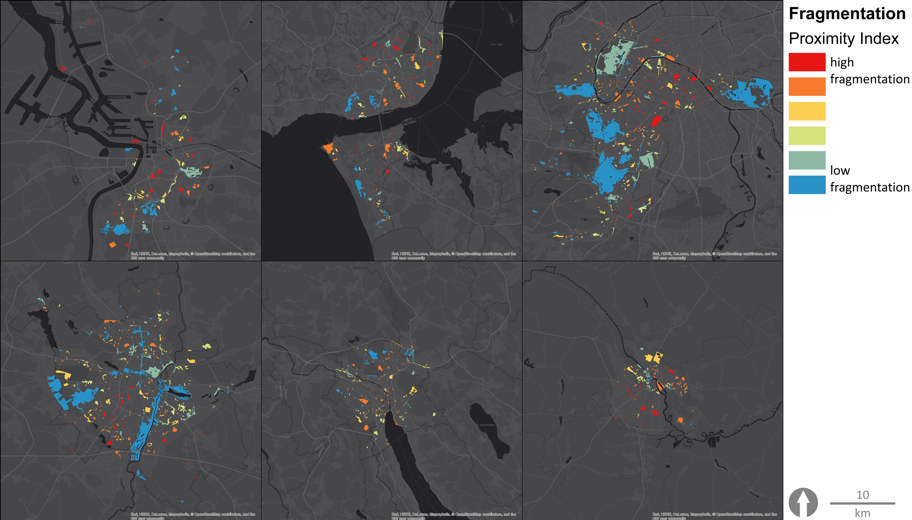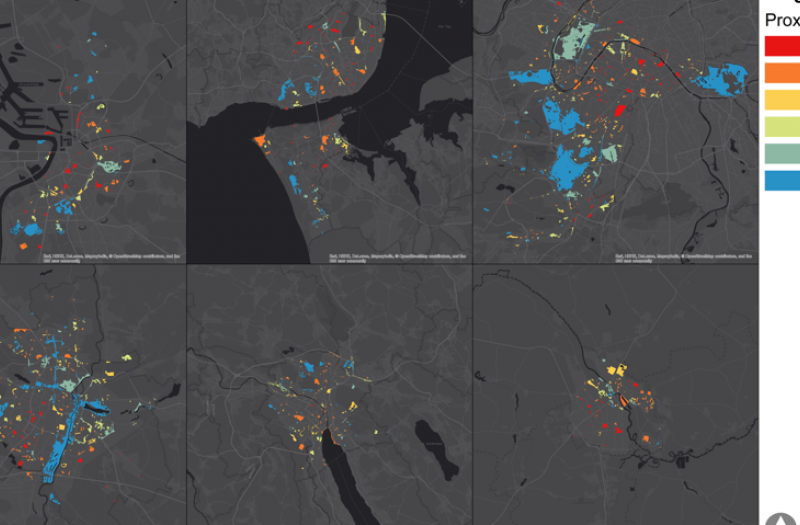BIOVEINS - Connectivity of green and blue infrastructures in Tartu: living veins for a biodiverse and healthy city

Tartu is one of the northernmost European capitals with a population of 97,000 inhabitants. It is climatically located in the hemiboreal forest zone (with a mean annual temperature ca. 4°C and an annual precipitation of 600 mm). The total city area is 159 km2, and green areas occupy more than 25%. This work is part of a BiodivERsA project with case studies at the city-level in 7 countries – search for the “BIOVEINS” keyword to find out about the other case studies of the project in urban areas. Urban green areas have been shown to support native biodiversity, enhance ecosystem functions,and provide important ecosystem services (ESs), from improved air quality to habitat for nursery and gene flow. This is particularly true when trees are present. Moreover, urban green and blue infrastructures (GBI) contribute to human well-being. Nevertheless, urban areas are characterized by highly polluted air, and due to the high proportion of impervious surfaces, urban GBI are fragmented and isolated. The latter impacts both abiotic and biotic conditions: cities suffer from the urban heat island effect, while taxonomic and functional biodiversity tends to become more homogenous and residents are increasingly disconnected from nature itself. In this regard GBI enhance the permeability for both biodiversity and citizens through dense and hostile urban matrices.
The main objective of our BIOVEINS proposal is to use functional diversity (FD) to highlight the mechanisms underpinning the link between GBI, taxonomic diversity (TD) and ecosystem services (ESs) provisioning, and to provide, together with local stakeholders, the ecological and interdisciplinary knowledge to identify the critical features of GBI, to guide the establishment, management and restoration of GBI, and to mitigate the effects of major urban global challenges, like habitat fragmentation, air pollution, and urban heat island.
This main objective will be accomplished by several specific objectives: (i) to analyse, together with local stakeholders, the actual and planned GBI from an urban planning
perspective, determine representative sampling plots and derive prior actions based on specific
objectives (ii) – (iv); (ii) to assess the FD for a variety of taxonomic groups differing in dispersion ability, sensitivity to
environmental conditions and use of resources within GBI to link the considered taxa to ESs and to
determine the importance of GBI connectivity on urban biodiversity; (iii) to assess the impact of proportion, configuration and connectivity of urban GBI on provisioning and
regulating ESs by an experimental and modelling approach, and link these ESs to the data obtained in
(i-ii) to assess the role of TD and FD on these ESs; and (iv) to provide tools, best practices, and guidelines for the stakeholders about how to improve urban GBI and how to enhance multifunctional ESs for people and nature.
WP1 Selection of sampling sites Seven cities were selected in Europe with different types of urbanization and climate. GBI patches were selected in each city.
WP2 Biodiversity and ecosystem services’ indicators. 12 taxonomic groups will be investigated at each sampling site within the...
Almost 80% of the population in developed countries lives in cities and a further increase is expected in the future. As a consequence a further loss of green spaces is anticipated, causing strong alterations of ecosystem processes and trophic interactions with exotic species playing an increasingly important role.
The project will provide a better understanding of the link between GBI distribution in cities and urban biodiversity and ecosystem services to cities. Through stakeholder engagement and outreach we will communicate these lessons and ideas to planners and residents of cities.
The project is still running (Jan. 2017 to Dec. 2019) and this page will be updated regularly as results, publications and reports are prepared.
This research was funded through the 2015-2016 BiodivERsA COFUND call for research proposals, with the national funders BelSPO (Belgium), FCT (Portugal), ANR (France) and ETAg (Estonia), NCN (Poland) and SNSF (Switzerland).
BIOVEINS Public outreach: Meredith Root-Bernstein, INRA, France mrootbernstein@gmail.com
BiodivERsA Science-policy/society interfacing: Frederic Lemaître, frederic.lemaitre@...
